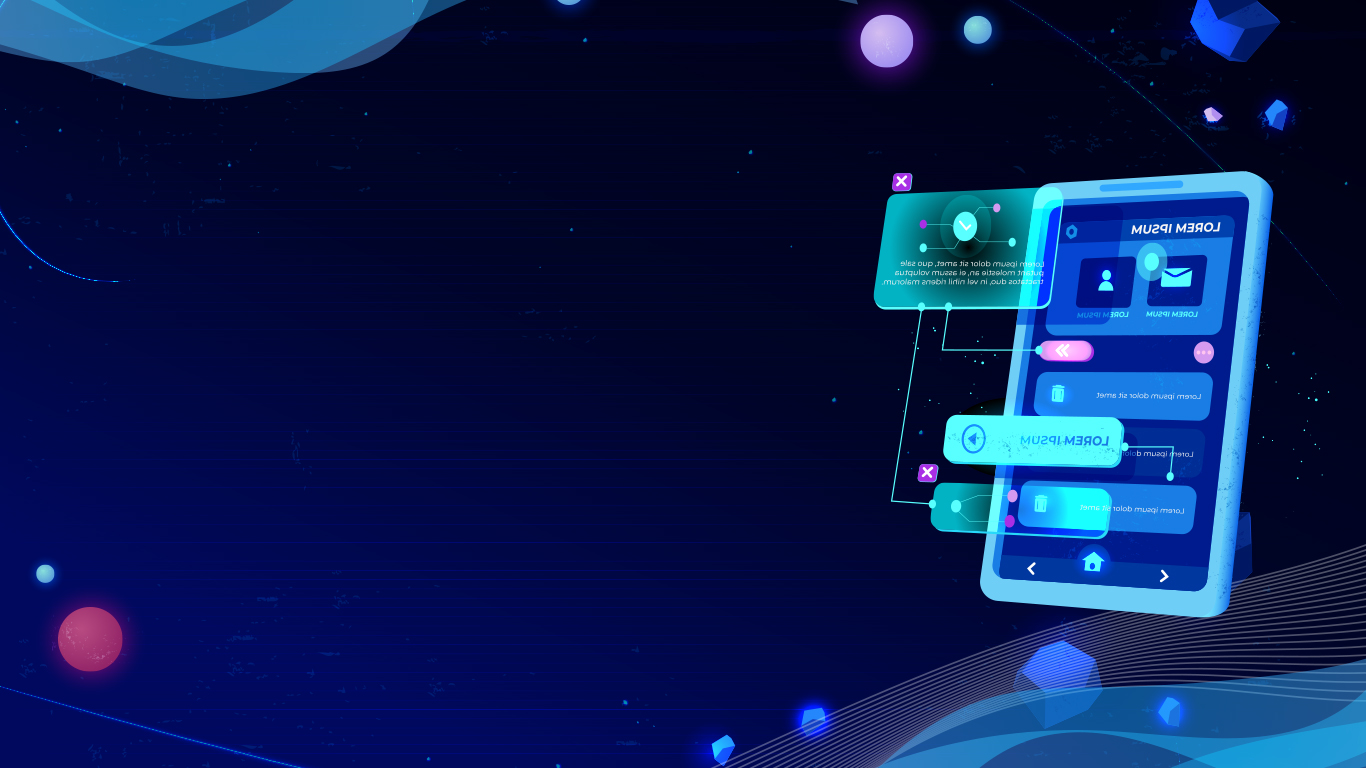
Combining deep industry insight and mobile technology leadership, Nimaisoft Mobile app team helps companies build and scale mobile app solutions—across multiple platforms and connected devices, through process transformation and design thinking—to succeed in today’s digital world.
We use effective UX designs and agile development strategies to deliver a wide range of stellar & cutting edge mobile app development services. We make native mobile apps for Android and iOS and cross-platform solutions in React Native,flutter and Xamarin,and hybrid solutions in Ionic, PhoneGap, etc. Our mobile app development team has a long streak in releasing foolproof, quality applications in the Google Playstore and iOS app stores.
Nimaisoft,an enterprise mobile application development company with 15+ years of experience in mobile app development, provide full-stack mobile application development services including ground-up bespoke mobile app development (Native / Cross-platform),design and development of your mobile application from idea to launch, integrating the new product into your infrastructure and providing further optimization and scale-up on demand to a variety of business verticals. Our smartphone app development services include:

The Android platform has the largest number of users and this number is growing at a rapid pace. In fact, there are millions of them across the globe today. Businesses want to build a solid presence on this platform so that they can connect with the huge user base out there.Android apps have considerably changed the mobile industry with its easy accessibility for all kinds of users of the market.
Google updates its API level every year,sometimes even twice a year. New API level brings new functionality apps can deliver. We offer support and development for the latest Android and API level. Android apps are backward compatible by default.
Android uses a new design metaphor Material Design inspired by paper and ink that provides a reassuring sense of tactility. Our designers have been designing apps around Google’s new design language called Material Design for a long time now and are ready for Google’s new design language.
At Nimaisoft we offer you efficient, innovative & avant-garde Android app development services using the latest Android development tools & Google SDKs. Apart from an industry presence of two decades, we have an impressive portfolio of several outstanding Android apps to our credit.
We are all aware that the iPhone has dominated the Mobile world.Worldwide the App Store has over 2 million iOS applications. This number is increasing with each passing day;hence it is the need of the hour to build iPhone apps on the App store to capitalize this opportunity and grow your business.
While Android phones have overtaken the share of the market physically, iPhone apps still generate the most revenue out of any mobile platform. iPhone app development and Android app development are two huge business ventures, but with the iPhone your ability to reach into people’s lives and generate revenue is unrivaled.

However, these apps are to be enriched with the right features and technologies to make an impact on the customers. This is the reason that businesses seek the assistance of an expert iPhone application development company to help them build a presence across the App Store.
With a hands-on experience of the latest iOS version and complete knowledge of Apple SDK, our app developers provide the customer-oriented iOS mobile app development.Our mobile app development team creates mobile apps for the latest versions of iOS, iPhone,iPad, Apple Watch & Apple TV while adopting futuristic app development techniques.Apart from an industry presence of two decades, we have an impressive portfolio of several outstanding iOS/iPAD apps to our credit. From design to development to testing and support, we provide end-to-end mobile app development services to help you build a new app for iOS or port your existing Android app to iOS.
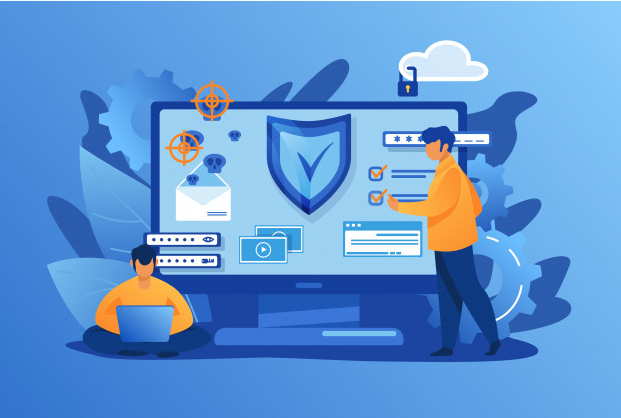
Cross-platform app development technology enables apps to function on multiple platforms with the same content and functionality. Although there are advantages to native applications, a well-made cross-platform mobile app makes a huge difference and carries a lot more advantage to users by giving them access to their products on more than one platform. Instead of spending a significant amount of time and money on developing two or more apps for different platforms, we may develop a single app that will perform across both iOS and Android platforms.
Gone are the days when cross-platform application development was considered plan B for those who couldn’t afford native apps. Today with the latest cross-platform technology like React Native,Flutter and Xamarin, it’s a feasible strategy to reduce both time to market and costs while building great mobile products that look and feel truly native.
Though both seem to be similar, Hybrid applications are slightly different from Cross platform applications where 80% of the device’s hardware or OSs features can be accessed and they enable Native UI components, compiles JS into native app code.This gives better performance too.
We offer multi-platform app development solutions that will provide the same dynamic experience to your customers, whether they use an Android phone, iPhone or iPad. Our seasoned app developers cater expertise in the latest cross-platform technology like React Native,Flutter and the time-tested Xamarin as well. Share your requirements with us and we will have a perfect cross-platform app for your needs.
Hybrid applications combine the best of both worlds, web and native applications. Going Hybrid reduces the cost of development, provides easy access to device data as well as works offline and scales to a variety of platforms and OS.
The heart of a hybrid-mobile application is still just an application that is written with HTML, CSS, and JavaScript. However, instead of the app being shown within the user’s browser, it is run from a container within a native application and its own embedded browser, which is essentially invisible to the user.These containers are called Web Views and their purpose is to mimic standard UI/UX of a given mobile app (be it iOS or Android).
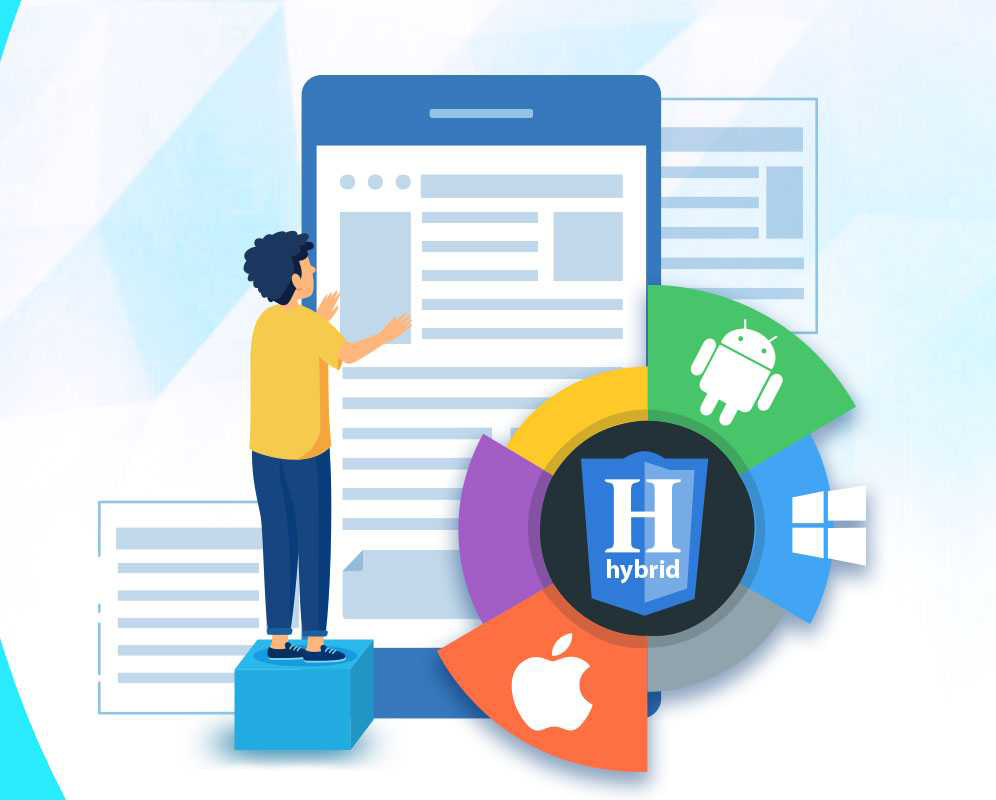
As they are wrapped in native container, they allow the app to access native platform features like the device’s camera, GPS, speaker, and accelerometer. Hybrid apps come with all the needed plugins written in native code, so they can take full advantage of a device’s capabilities through APIs. Your hybrid app will thus work on all platforms you want to make it available on.
The latest hybrid frameworks such as like Ionic, Apache Cordova and Adobe PhoneGap (essentially the commercial version of Apache Cordova) combine the power of Javascript, HTML5 and CSS3 to develop Hybrid applications look like native and made Native apps and hybrid are nearly indistinguishable from one another.
We, at Nimaisoft, create hybrid mobile applications that effectively work across various platforms and devices using a wide variety of latest technologies.
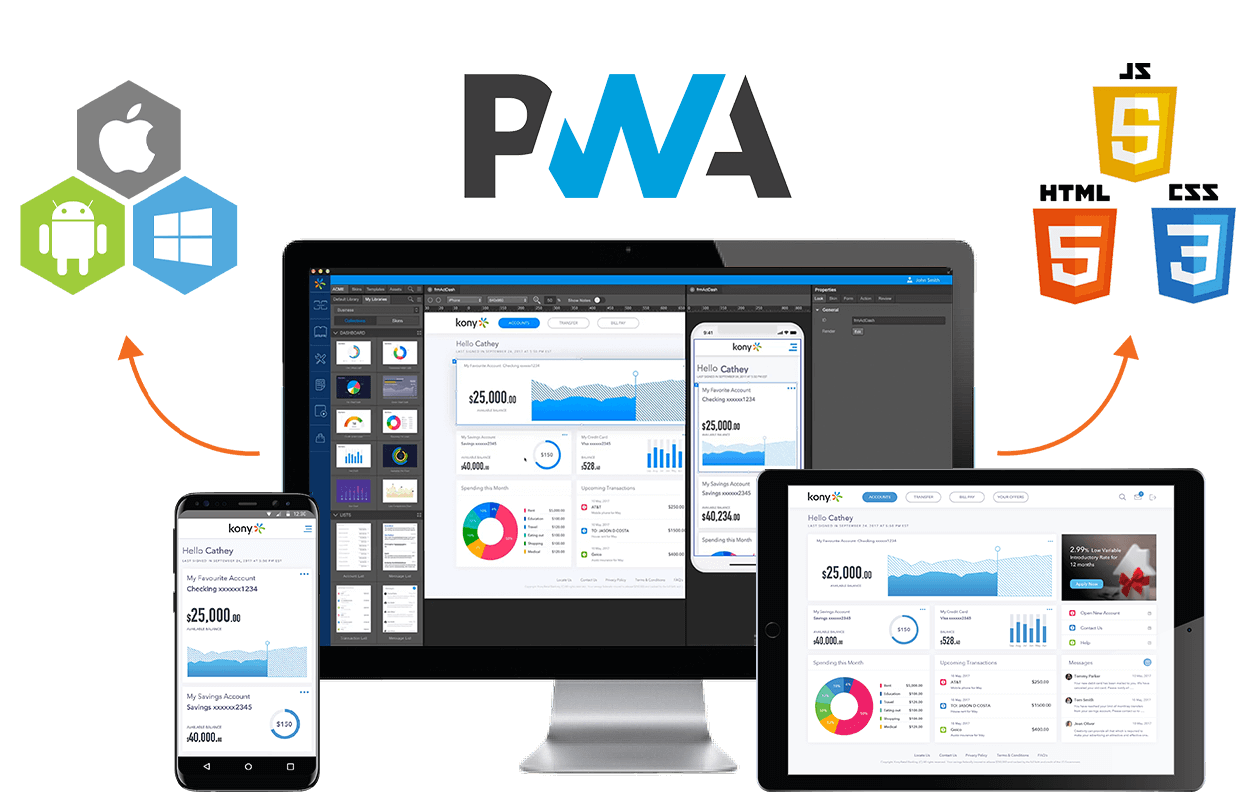
A Progressive Web App (PWA) is a web app that uses modern web capabilities to deliver an app-like experience to users. PWAs take advantage of the latest technologies to combine the best of web and mobile apps.Progressive web apps are regular web pages designed to appear like native apps that convey combined mobile experience and compatibility with standard web browsers.
Recent advancements in the browser and in the availability of service workers and in the Cache and Push APIs have enabled web developers to allow users to install web apps to their home screen, receive push notifications and even work offline. Unlike native or hybrid mobile apps, these apps are deployed on servers, accessible through URLs, and indexed by search engines.
A study has shown that, on average, an app loses 20% of its users for every step between the user’s first contact with the app and the user starting to use the app. A user must first find the app in an app store, download it, install it and then, finally, open it. When a user finds your progressive web app, they will be able to immediately start using it, eliminating the unnecessary downloading and installation stages. And when the user returns to the app, they will be prompted to install the app and upgrade to a full-screen experience.
Flipkart uses a progressive web app for its popular e-commerce platform, Flipkart Lite, and SBB uses a progressive web app for its online check-in process, allowing users to access their tickets without an Internet connection.
We help clients by developing best-in-class progressive web applications that aren’t just superfast and lite but also connectivity-independent and compatible across all devices and screen sizes.We take the power of Progressive web app technology and combine it with our extensive Mobile and Web App development expertise to deliver a feature- packed solution.
An enterprise mobile app is a mobile application used in a business to solve one (or more) of their needs. Typically, this can mean a mobile app that employees are able to download to either help with their day-to-day work, provide a place for them to share and maintain data, or even submit requests to their HR department.These apps are usually developed to be compatible and integrate with software that the business is already using enterprise software.
Enterprise Mobility is becoming the gateway to collaborate and communicate effectively to improve productivity and facilitate faster decision making, while meeting the security and reliability requirements of a large organization.
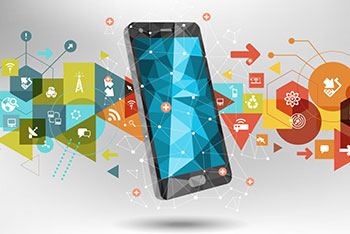
With significant growth in the adoption of Bring Your Own Device (BYOD) policy and Mobile Application Management (MAM), organizations need to offer flexible and interactive applications between internal stakeholders, clients and business partners.
It is vital to have your custom-built mobile application sync up with your enterprise’s digital anatomy. Amongst other things, this means a flexible API entry point that will allow easy sharing between your application and the host systems your business runs on.
We offer a full cycle of application design and development services tailored to your business needs. This includes end-to-end development, from BA and UI/UX design to deployment in store. Whether it is an on demand app or a transformative enterprise-class app, we lead the entire mobile app development process from ideation to delivery.
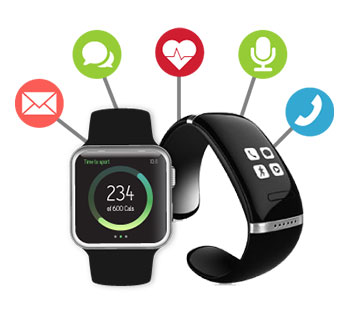
Wearable Technology has opened up a new space in the mobile industry. Today, wearables are everywhere; devices such as Apple Watch, Android wear, Google Glass, Smart Watch, and healthcare wearables have taken the market by storm and their popularity is only growing with time.Beginning from a modest watch, this device over the period, transformed from being worn as accessory to stash watch to wristwatch to head mounted devices and now into apparel i.e e-Textiles.
Wearable apps are different from the native or hybrid ones developed for smartphones. Designing a wearable app is tougher due to the smaller screen size and various factors like constant connection to the human body, sensors attached and device functionalities. Thus, ensuring a feasible design and coherent experience become more important than ever. The balance between simple user interface and powerful functionalities leads to a great Wearable device user experience.
We incorporate advanced technology into the things we wear daily and connect with the mobile platforms for serving impeccable experiences.We offer enterprise mobile application development solutions for portable devices equipped with sensors and smart screens. We support them with remote data monitoring, migration and advanced cloud-based capabilities using our mobile app development expertise.
At Nimaisoft, we help clients to change through the massive prospects given by wearable technology. We give customized solutions in the zone of wearable devices, breaking down your necessities and structuring models to test ideas so they can be approved before being placed into creation.
Drones are now more than just toy flying machines; the drones currently available to consumers are flying computers with exceptional 3D computation and application support capabilities. The commercial drone market is growing. It‘s expected to reach $ 13 billion by 2025. Amazon, the largest online retailer has started a service named ’Amazon Prime Air‘ with nearly 4,50,000 drones in its delivery fleet.
What would have previously required helicopters, or at the very least, light aircraft, to collect data at the cost of thousands of dollars, is now available to small businesses and individuals to do with as they see fit. Consumer drones are the latest example of innovative technology disrupting paradigms that were previously the exclusive domains of big enterprise and government agencies.Drones are being used to help agriculture, videography, journalism, building inspections,search-and-rescue missions and remote sensing platforms such as aerial mapping..etc.

Data collection is the most valuable contribution from drones because they have the capacity to collect and retain large volumes of information.Drones can use sensors and navigation aids such as inertial sensors & GPS and return data from new perspectives.Small and cheap commercially available drones are an exciting new class of platforms that give a new perspective on data for instruments and sensors, limited only by the imaginations of people who have the enthusiasm to exploit them.
Usually each drone is equipped with out-of-the box software allowing direct, real-time interaction with the drone at the time of flight. However, the possibilities provided by such “box” drone software may be insufficient for your business needs. In these cases, you will need a custom software solution.
Whether you want to measure the volume of a stockpile, create a report of your building site, analyse the state of your crops, check the weather forecast or find out what hazards are in the vicinity, we can help you with customized drone apps suitable to your requirement.
We create the custom drone mobile apps by using drone manufacturer SDK /API to communicate with the drone at the time of flight.We develop the apps supporting the drones from DJI, Parrot,Autel Robotics, Yuneec and Hubsan, some of the biggest drone manufacturers on the market.
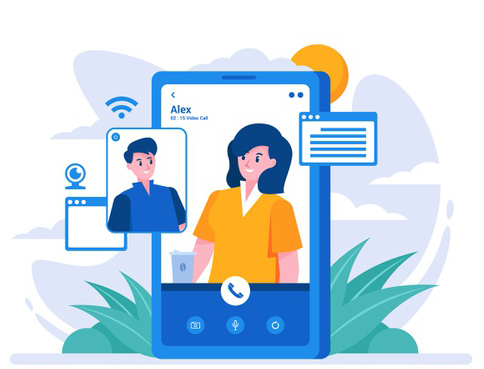
In-app chat is a chat interface within an app or product, enabling users to communicate in real time privately or in a group.In-app chat is the 1:1 or group realtime, bidirectional communication that takes place in an app or product. In app chat can be any direct text-based or video-based one-to-one chat or one-to-many group chats like what we see in whatsapp.
In – App Chat offers a personal touch to any app.People engage longer when they see, hear, and interact with each other.
In-app chat features can be as simple as solely allowing messages to be sent between the users, or can include any number of advanced chat features like typing indicators, user profiles, user lists, or push notifications.
Nimaisoft has experience in creating rich scalable and flexible web and mobile apps using open-source WebRTC standards as well as other tools like TokBox. With WebRTC we can have interaction features like Audio-Video communication, Real Time Text Chatting, Screen Sharing, and even simple Data Exchange to complicated enterprise level solutions or stand alone applications designed for your needs.
We help you develop complete feature-enriched chat experience with diverse messaging possibilities such as private, group and public chat rooms.
We are living in a world where everyone is busy with their smart devices and try to find the simplest and easiest way to solve their day to day requirements. The on-demand app is a platform for the customers that knots the user-generated demand at one place – on mobile devices. This all-pervasive, generic turnkey solution can be deployed for almost any business from a taxi booking to meal delivery.
On demand apps have disrupted many business segments.On Demand Mobile apps have made daily life more convenient than ever before. Thanks to on demand service apps like Uber, Swiggy, and TaskRabbit, you can get a ride to the store, order dinner, and even hire someone to clean your home, all just will with the push of a button. On-demand apps cater to each and every requirement of the individual and offer services right at the doorstep with a few taps over the screen. From the service provider standpoint it means access to more demand (if we are considering an established brick-and-mortar business) or not having to market (if we are talking about freelancers).
Though we have many on demand apps in the market, luckily there are still plenty of niches left for on demand service apps to fill. If you have an idea for one, we can help you turn your idea into a reality.
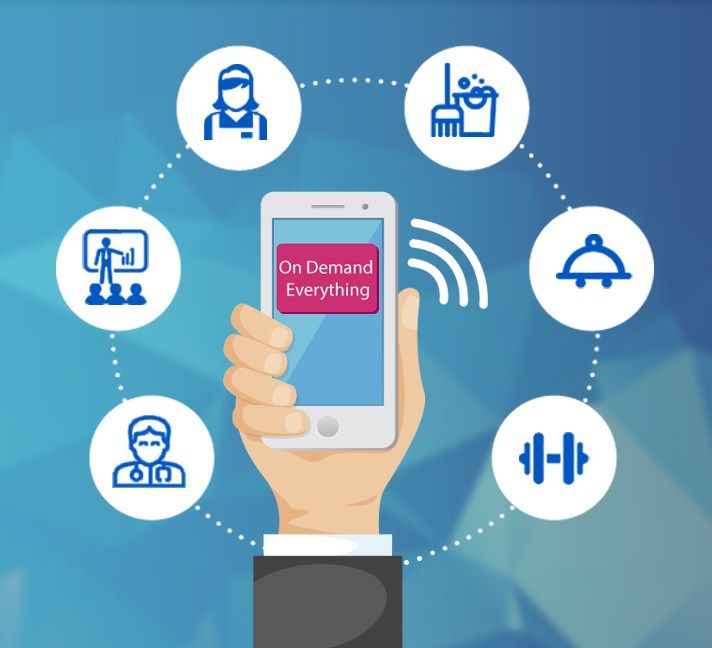
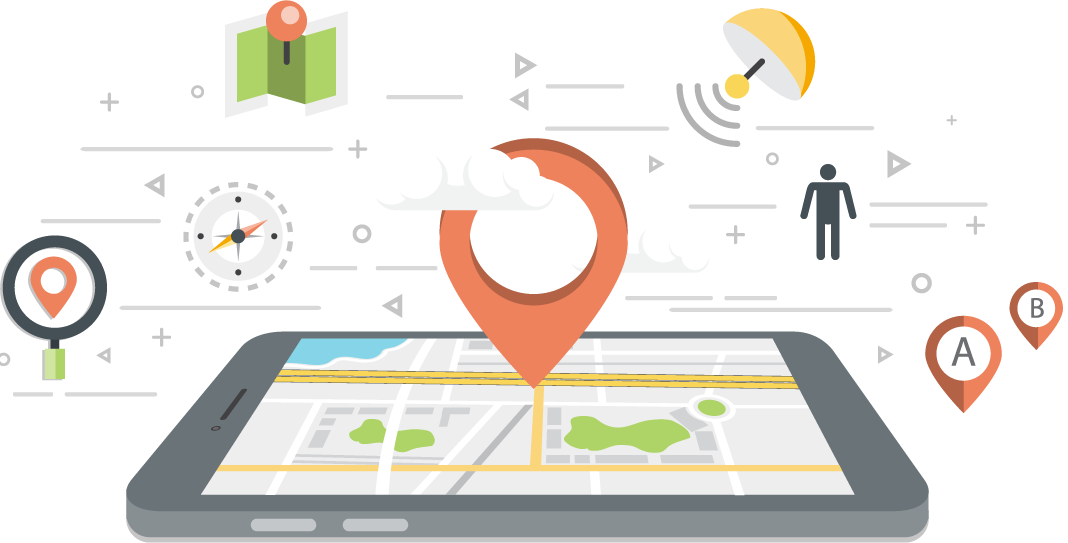
Geo location is a technology for a mobile interface, which is available for every smartphone. This location-based services can be found in iOS or Android smartphone, fitness tracker, delivery app, or anything that has a GPS chip or connects to Wi-Fi. The key features of every location-based application are – GPS tracker, location tracking, and map integration.
The location-based apps have changed millions of peoples’ lives. The trend of geolocation has densely entrenched in the mobile application market. Geolocation in the mobile app has opened the door for new startup ideas and has established businesses that basically couldn't exist without this technology.
Some applications are entirely based on this technology, and even created a new niche of location-based services in the market. Others use it as an additional feature to extend the service and make it more advanced.
From looking up directions on Google Maps to hailing a taxi via Uber, geolocation apps have become a backbone for many thriving businesses. Foursquare has built a loyal audience of 60 million users by letting them check into restaurants. Uber reached a market worth of $72 billion by connecting passengers and taxi drivers. Starbucks has increased sales by adding local notifications.
Indoor mapping and location data is in high demand.Indoor mapping is a process that builds a complete representation of an indoor space by mapping floor plans, indoor positioning, and other data. It allows for indoor wayfinding and navigation features, in addition to multiple personal and business uses that rely on a thorough understanding of indoor space.
With Nimaisoft, you can create engaging and smart building solutions with accurate indoor 3D maps. You can create custom maps and integrate with IoT data for next-level employee and visitor engagement.
We can integrate Geolocation related features in mobile apps by using technologies like Google Maps,MapBox,Google places API,Foursquare API,Urban Airship API,Facebook Places, Yelp API, and TripAdvisor API.
Geofencing is a location-based service in which an app uses GPS, RFID, Wi-Fi or cellular data to trigger a pre-programmed action when a mobile device enters or exits a virtual boundary set up around a geographical location, known as a geofence. A geofence is a virtual fence around a real-world location, like a restaurant or an airport. Geofences can vary in scale and shape – they can be as small as a store or as big as a city; they can be round for more straightforward use cases or polygon-shaped for more complex situations.
Geofencing, geotargeting and beacons are all used for location-based marketing. They mainly differ in the way they generate location data and establish a target range.
Geofencing technology enables mobile apps to take advantage of location-based marketing. This technology can help marketers collect information and engage app users as they enter, leave or stay in certain geographical areas, also known as geofences.Depending on how a geofence is configured it can prompt mobile push notifications, trigger text messages or alerts, send targeted advertisements on social media, allow tracking on vehicle fleets, disable certain technology or deliver location-based marketing data.
Beacon is a small BLE (Bluetooth Low Energy) radio transmitter.It repeatedly transmits a single signal that other devices can see. A Bluetooth-equipped device like a smartphone can “see” a beacon once it’s in range, much like sailors looking for a lighthouse to know where they are.
Beacons are great for proximities and knowing at a very granular level that someone is near a certain object or product, and geofences are generally for larger areas where you want to know if someone is walking by your store, by a competitor’s, or coming into a particular location.
As proximity marketing becomes a key aspect of the modern mobile marketing approach, the role of tiny beacons becomes a big one. Beacon apps are, therefore, gaining precedence for businesses that want to deliver enhanced user experiences, enable interactivity, and facilitate communication using this path-breaking technology.
Two technologies are widely used to build beacon based mobile apps, they are iBeacon API was built by Apple part of iOS and another one by Google, Eddystone for android based apps.
All of the above-stated instances give a marketer three distinct avenues to engage with users powered by their location data and activity. Location-based marketing or Geofencing marketing gives brands the power to engage contextually concerning a user’s proximity to a precise physical location.
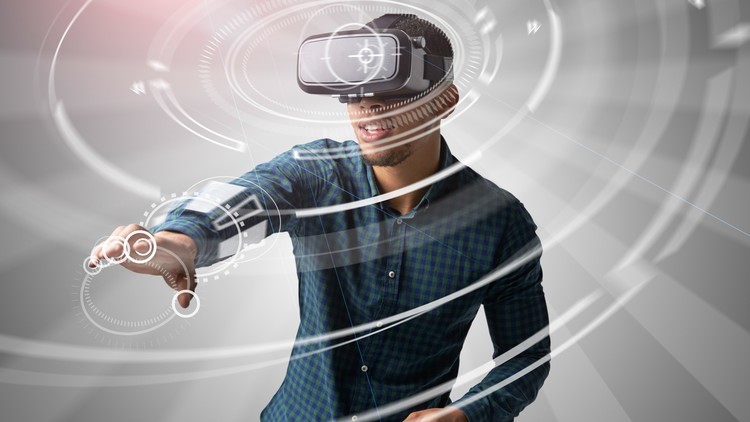
The reality–virtuality continuum covers virtual reality (a completely immersive virtual experience) on one end and augmented reality (which augments the user’s real worldview with digital objects) with mixed reality(MR) falling in the middle. This entire spectrum is called extended reality (XR).
AR/VR/MR(XR) technology has been expanding immensely and is actually on the verge of exploding.Augmented reality and virtual reality are one of the app development trends that most businesses have embraced today.
Industry 4.0 symbolizes the fourth industrial revolution which is essentially the digitalization of the industries with the help of AR/VR/MR solutions to aid the manufacturers with the self-diagnosis, automation, analytics, better working conditions for employees and digital supply chain. AR/VR/MR allows adding or changing certain elements of the products in real time and allows monitoring of information through sensors and controllers.
Our XR software developers are experienced in building fully-rendered XR apps. Our services also include: conceptual and visual outlining, 3D modeling and design, rigging and animation, 3D photogrammetry, 360° video integration, interaction design and platform development. Our designers combine VR design tools (Unity, Unreal Engine, Steam) with choice hardware (HTC Vive, Oculus, Samsung Gear VR) when customizing software solutions.
We provide end-to-end custom XR design and development solutions to diverse industries including construction, advertisement, healthcare, education, real estate, hospitality, and more.We redefine the way users interact with your app by utilizing the power of Augmented and Virtual Reality.
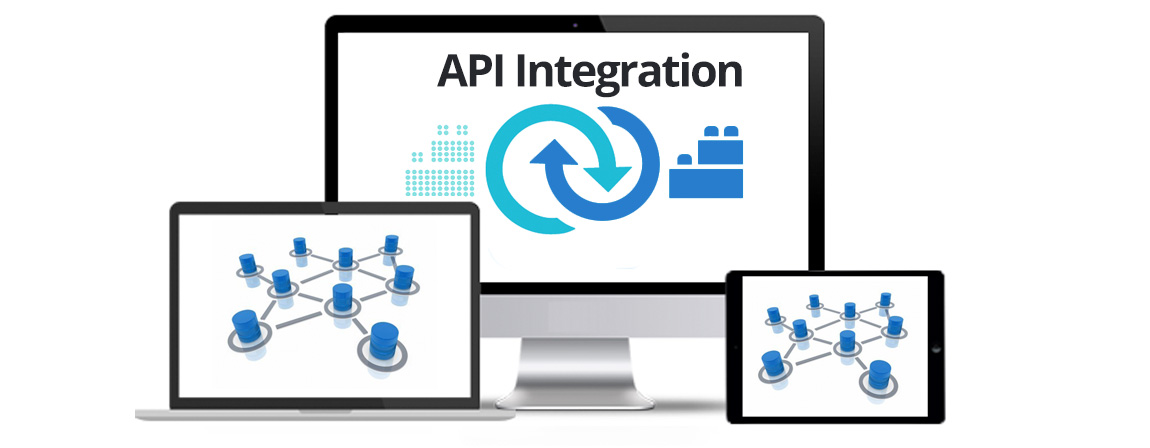
We build apps of all shapes and sizes, but a common element is that they communicate with servers through API's.Many don't take the time to plan out a good API. Additionally, even with the abundance of apps, not everyone has built web services or APIs for apps specifically. REST is by far the most commonly-used style for designing APIs, especially in the mobile world.
With mobile app users updating their apps at different frequencies, versioning your API becomes more important than other, more controlled environments. With several different versions of the app running in the wild, the server needs to consolidate and handle the various requests coming in from new and legacy users alike.
A useful communication avenue unique to mobile is the push notification. Your server is responsible for tracking device tokens that maps devices to users for sending push notifications. Using a service like Firebase, however, to manage device tokens and send push notifications to iOS and Android users is typically more cost effective than building your own.
Many mobile users will expect the app to have some functionality even while offline. Once reconnected to the server, reconciling or syncing the offline activity with the server by making API calls with timestamps is very important.
We expertise in a large variety of APIs using SOAP, REST and XML-RPC as well as JSON and other protocols. Our evolutionary architecture with proper versioning gives flexibility for incremental additions. APIs are made to be platform independent so that any app can call the APIs.
Mobile apps often deal with really private and sensitive user data like personal health information or banking information. Losing data or getting hacked, therefore, can have huge consequences.A breach in mobile security can not only give hackers access to the user’s personal life in real-time but also disclose data like their current location, banking information, personal information, and much more.
To make sure that only your mobile app can use your server’s API and block all other requests, we use certain API tokens/secrets.The client then needs to authenticate himself by sending some sort of generated token or by signing the request. The server then validates the request and replies only to the real app.
The best way to protect against these kinds of attacks is by using end-to-end encryption. It makes sure that only communicating client devices can decrypt the messages. This could mean in the case of a messaging app that only the receiver can decrypt the sender’s message and in the case of a health database app that only devices owned by the same person can decrypt the data. No other parties can decrypt the data, not even the service provider.
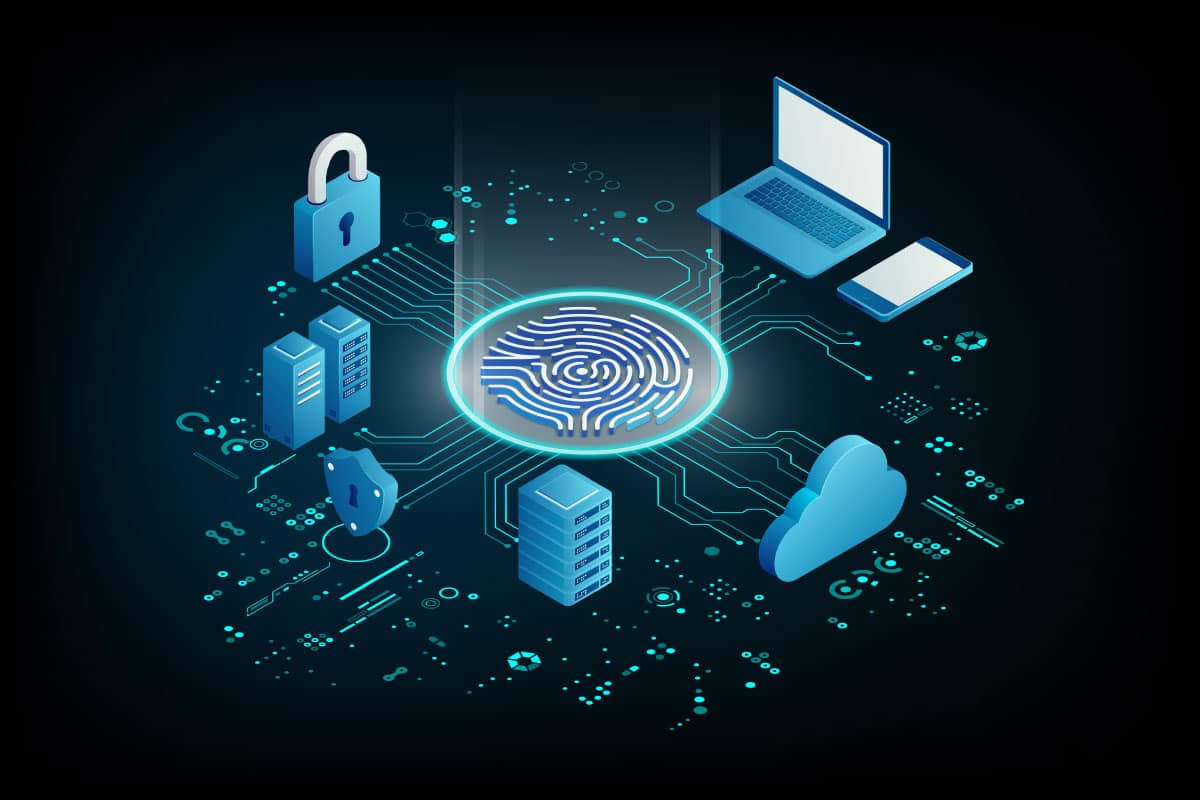
End-to-end encryption is considered safer, as it minimizes the number of parties involved in the data encryption process (and who may be attacked). For example many systems that we use in day-to-day life – such as email services and online chats – encrypted messages may still pass through a company’s servers, where they’re decrypted and stored before being delivered to the recipient. With end-to-end encryption, a service provider’s server only works to pass messages, while the actual encryption/decryption procedure happens on users’ devices.
To establish end-to-end encrypted connections for the features like chatting between the users, we generate all needed keys when the chat is created to ensure secure message encryption. In order to gain additional network security, all keys are generated per chat, meaning that keys generated for chat A are useless for chat B. Despite the strength of the encryption algorithm, exchanging keys is a challenge. We can ensure the security in exchanging the keys with the help of a secure communication channel established by the Diffie-Hellman algorithm which is one of the first famous asymmetric key implementations, and it’s mainly used for key exchange.
We provide complete end-end encryption of the data. The data is completely encrypted on the mobile app as well as on the server side. It can only be accessed by the authorised users through the Android / iOS applications.
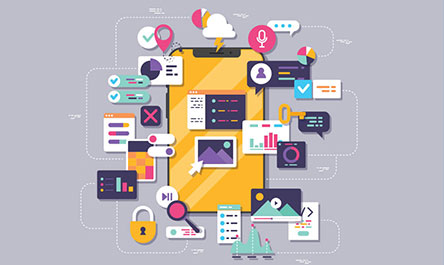
User interface design (UI),is the design of user interfaces for software, with a focus on maximizing user experience by employing design principles that concentrate on usability and utility. Good user interface design ensures that interface elements are functional, easy to access, and easy to understand.
UX isn’t only about usability; it’s mostly about feelings.User experience (UX) refers to user emotions and attitudes regarding the use of a particular product. User interface design and user experience are interrelated since the quality of an individual’s experience using the application correlates with the quality of interface elements. And when we think about what makes us feel great, we often think about well-crafted design.
The average mobile user spends 3-4 hours per day on mobile. The vast majority of that time is spent in apps.The difference between a good app and a bad app is usually the quality of its user experience (UX).A well-designed user interface will make your app shine. If you want your app to be successful, you have to consider UX to be an essential component of product strategy.
A great design is the perfect combination of beauty and functionality, and that is exactly what you should be aiming for when building an app.It’s fair to say that design is a process of continual improvement. As product designers, we use analytics and user feedback to improve the experience continually.Once we accurately identify the insights of the end users, our design team will design a strategy that supports both your business goals and your users needs.We use all the design principles to make the UI designing efficient.